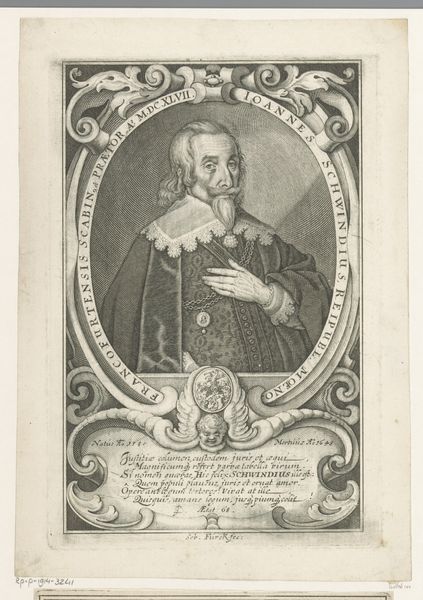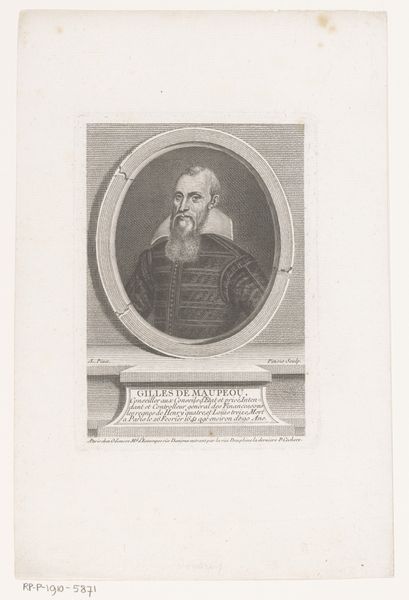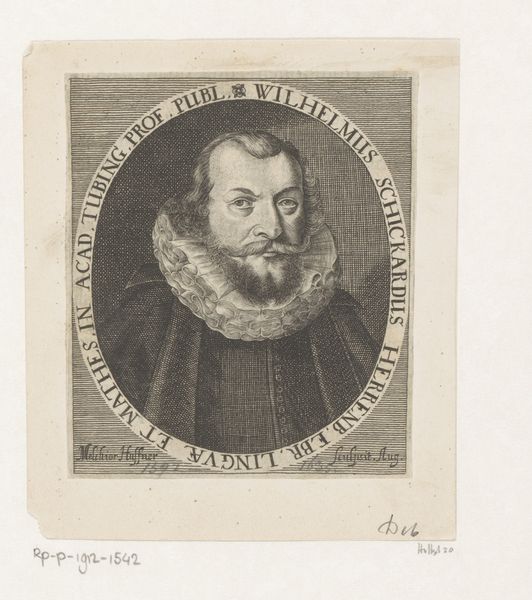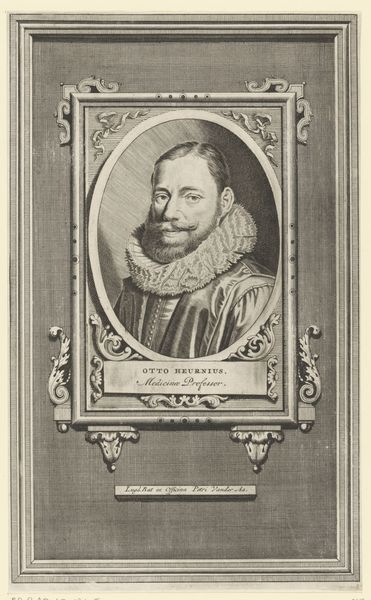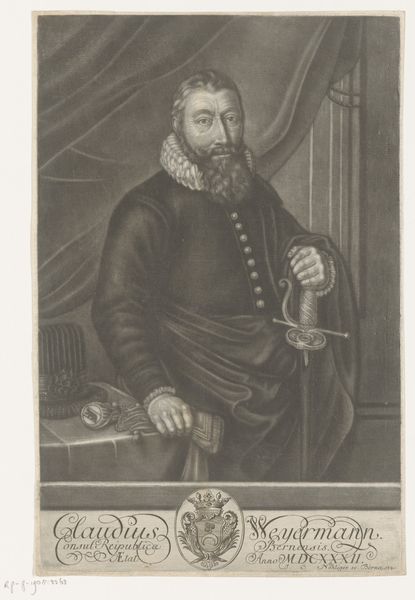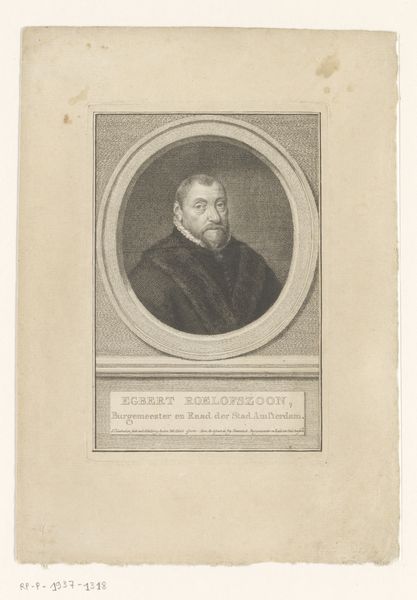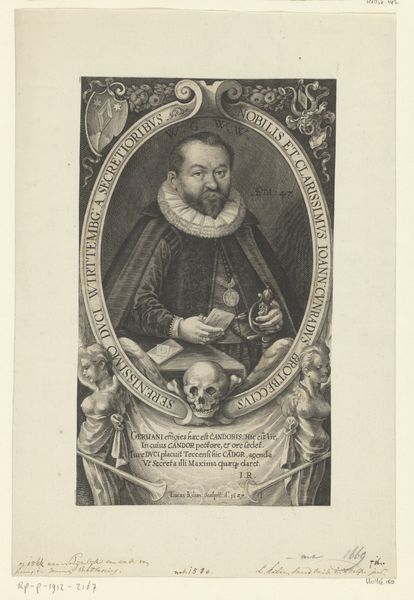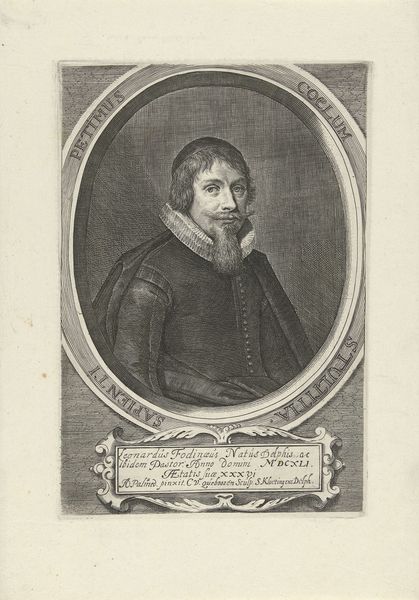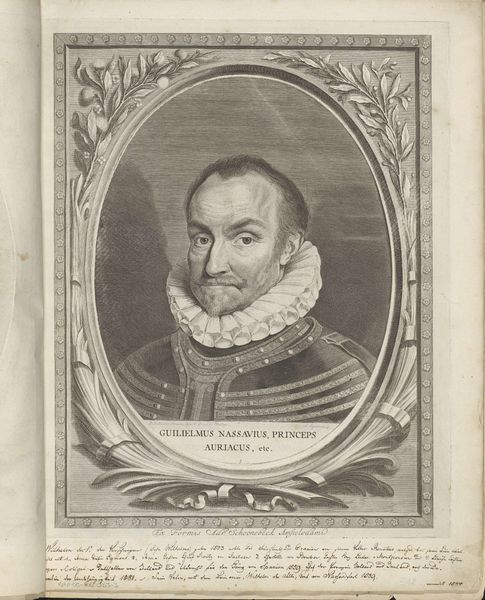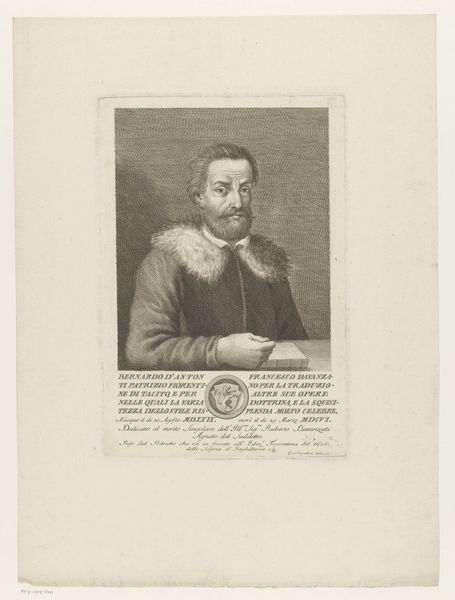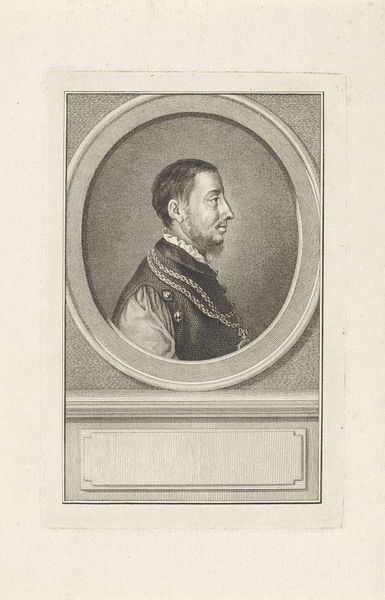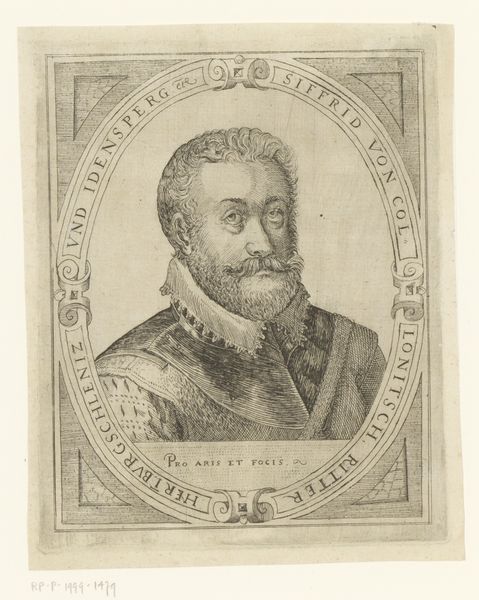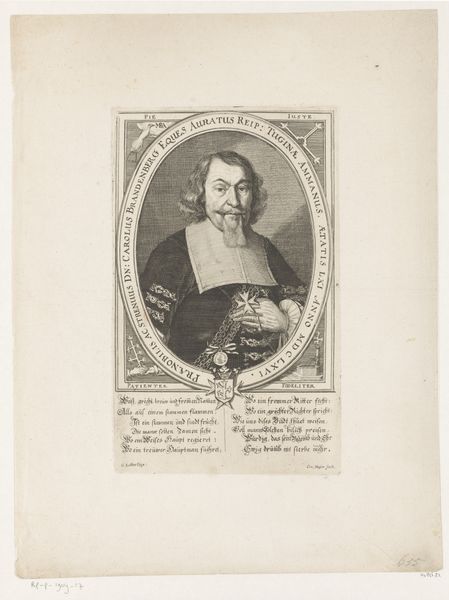
print, engraving
#
portrait
#
baroque
# print
#
old engraving style
#
figuration
#
personal sketchbook
#
line
#
history-painting
#
academic-art
#
engraving
#
realism
Dimensions: height 208 mm, width 138 mm
Copyright: Rijks Museum: Open Domain
Curator: Here we have a 17th-century print identified as "Portret van Leonhard Dilherr," crafted by Cornelis Nicolaus Schurtz. It’s a Baroque portrait rendered with the precision of engraving. Editor: The intricacy is immediately striking. The tonal range achieved in this small engraving is quite captivating—almost photographic, yet the medium speaks to a meticulous handmade quality. Curator: Indeed. Observe how the formal realism employed in this portrait reflects a specific social decorum. It's academic in its rendering of the figure, almost striving to create an impression of gravitas. This approach would very likely align with the sitter’s own desired public image. Editor: The composition seems very structured—confined almost—by the oval frame, replete with decorative flourishes. It traps him while aggrandizing him. There's tension between the line work defining his face, and the flourishes surrounding the portrait. Is there something we should read into this contrast? Curator: The flourishes exemplify the Baroque fondness for ornamentation, yes, but also serve as a visual endorsement of Dilherr’s status, subtly reinforcing his societal standing through symbolism. A lot can be said for prints during this era. Engravings allowed for wider dissemination of images and thus played a crucial role in constructing and broadcasting reputations of notable figures. Editor: I hadn’t considered its propagandistic function so literally. Looking at the meticulous rendering of his lace collar and the fine lines of his mustache, I recognize the ambition to document. Perhaps to create a kind of historical truth through exacting likeness? Curator: I believe it's about reinforcing a curated identity through a widely distributable medium. The print's relatively accessible nature means this image of Dilherr would likely have found its way into various contexts, thus shaping his legacy among a broader audience. Editor: That frames the engraving differently, providing a sharp counterpoint to what I previously considered an intimate artifact. Curator: Yes, contextualizing the art expands the appreciation of the engraving, bringing depth and renewed viewing to the printmaking of that era. Editor: It goes beyond mere technical skill into a statement of social currency, it's amazing how visual analysis informs how we perceive the piece in a different light.
Comments
No comments
Be the first to comment and join the conversation on the ultimate creative platform.
